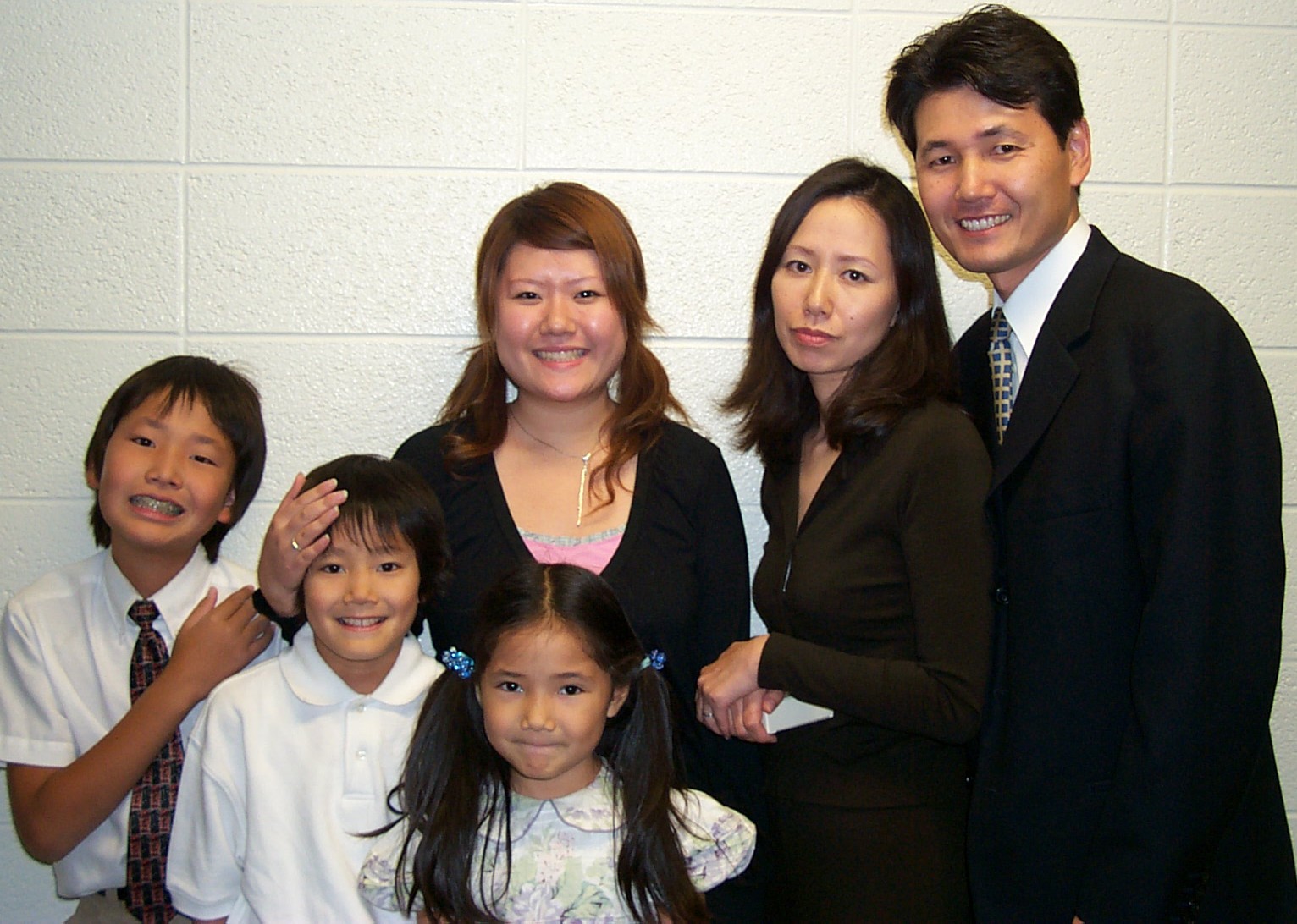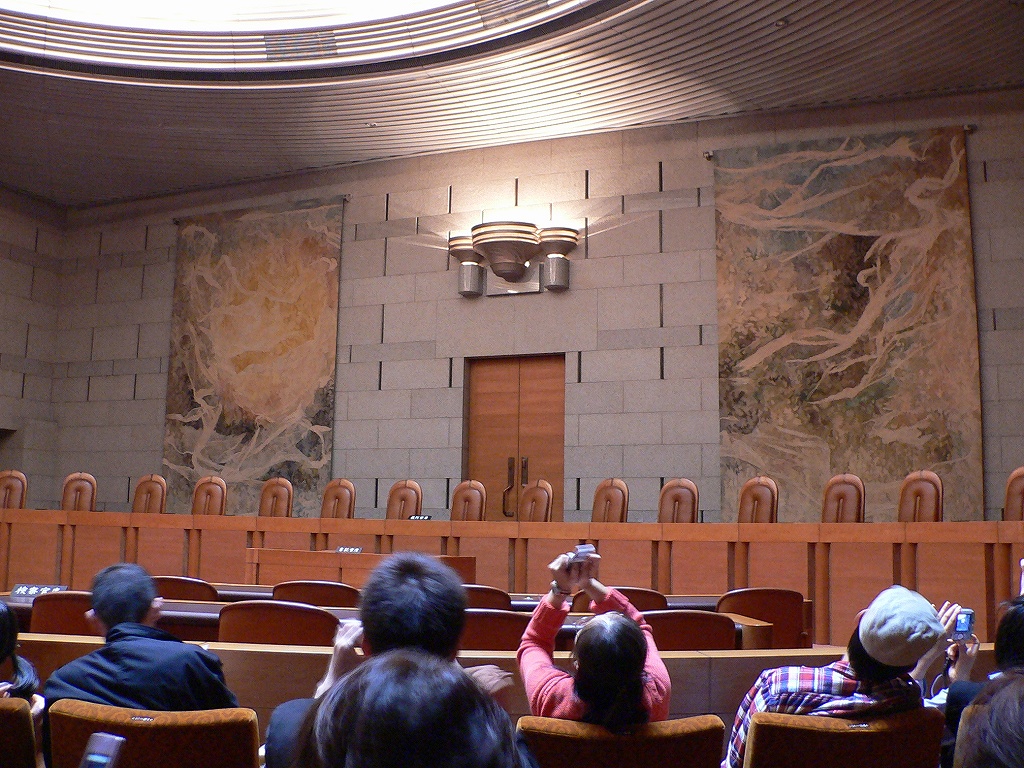|
Ie (Japanese Family System)
''Ie'' is a Japanese term which translates directly to household. It can mean either a physical home or refer to a family's lineage. It is popularly used as the "traditional" family structure. The physical definition of an ie consists of an estate that includes a house, rice paddies and vegetable gardens, and its own section in the local cemetery. The symbolic definition of ie has been referred to as the cultural medium for the physical processes of kinship, such as mating and procreation. The symbolic ie refers not only to blood lines, however, but also to economic and socioreligious functions that take place within the family. Family registration and status The ie is a patriarchal household and is considered to consist of grandparents, their son, his wife and their children. In a "traditional" Japanese household, the eldest son inherits the household property as well as the responsibility of taking care of his parents as they age. The eldest son is also expected to live with h ... [...More Info...] [...Related Items...] OR: [Wikipedia] [Google] [Baidu] |
Buddhist
Buddhism ( , ), also known as Buddha Dharma and Dharmavinaya (), is an Indian religion or philosophical tradition based on teachings attributed to the Buddha. It originated in northern India as a -movement in the 5th century BCE, and gradually spread throughout much of Asia via the Silk Road. It is the world's fourth-largest religion, with over 520 million followers (Buddhists) who comprise seven percent of the global population. The Buddha taught the Middle Way, a path of spiritual development that avoids both extreme asceticism and hedonism. It aims at liberation from clinging and craving to things which are impermanent (), incapable of satisfying ('), and without a lasting essence (), ending the cycle of death and rebirth (). A summary of this path is expressed in the Noble Eightfold Path, a training of the mind with observance of Buddhist ethics and meditation. Other widely observed practices include: monasticism; " taking refuge" in the Buddha, the , and th ... [...More Info...] [...Related Items...] OR: [Wikipedia] [Google] [Baidu] |
Japanese Family
The family is called in Japanese. It's basically composed of a couple as is the family in other societies. The Japanese family is based on the line of descent and adoption. Ancestors and offspring are linked together by an idea of family genealogy, or ''keizu'', which does not mean relationships based on mere blood inheritance and succession, but rather a bond of relationship inherent in the maintenance and continuance of the family as an institution. In any given period of history, all family members have been expected to contribute to the perpetuation of the family, which is held to be the highest duty of the member. History A great number of family forms have existed historically in Japan, from the matrilocal customs of the Heian. As official surveys conducted during the early years of the Meiji dynasty demonstrated, the most common family form during the Edo ( Tokugawa) period was characterized by patrilocal residence, stem structure, and patrilineal primogeniture, so a ... [...More Info...] [...Related Items...] OR: [Wikipedia] [Google] [Baidu] |
Imperial House Of Japan
The , also referred to as the Imperial Family or the House of Yamato, comprises those members of the extended family of the reigning Emperor of Japan who undertake official and public duties. Under the present Constitution of Japan, the Emperor is "the symbol of the State and of the unity of the people". Other members of the Imperial Family perform ceremonial and social duties, but have no role in the affairs of government. The duties as an Emperor are passed down the line to their male children. This Japanese monarchy is the oldest continuous hereditary monarchy in the world. The Imperial House recognizes 126 monarchs, beginning with Emperor Jimmu (traditionally dated to 11 February 660 BC), and continuing up to the current emperor, Naruhito. However, scholars have agreed that there is no evidence of Jimmu's existence, that the traditional narrative of Japan’s founding is mythical, and that Jimmu is a mythical figure. Historical evidence for the first 25 emperors is mythical, ... [...More Info...] [...Related Items...] OR: [Wikipedia] [Google] [Baidu] |
Honke
The is the main household of Japanese family. It is part of the system of family branching that establishes a multiplied structure to create familial relationships. The head of a household and his successor reside in the ''honke'', while collateral branches establish ''bunke''. The genealogical relationship between ''honke'' and ''bunke'' is determined by the ''ie'' family system. The ''honke'' establishes the new branch family while ''bunke'' is linked to it since both are part of the ''ie''. They can be described in terms of vertical relationships where the branch is subordinated to the main household. This system also determines how the access to resources is ordered. The honke-bunke relationship can be demonstrated in the case of the imperial household, which is said to have descended from its founder Amaterasu-omikami. Her grandson Ninigi-no-Mikoto is the ''honke'' while the other branches of the family or those distantly related members of the household are the ''bun ... [...More Info...] [...Related Items...] OR: [Wikipedia] [Google] [Baidu] |
Bunke
A is a branch family established by a collateral of the ''honke'' (the line descended through the eldest male) in Japan. See also * Ie (Japanese family system) * Japanese family structure * ''Koseki A or family register is a Japanese family registry. Japanese law requires all Japanese households (basically defined as married couples and their unmarried children) to make notifications of their vital records (such as births, adoptions, death ...'' References * {{cite encyclopedia , year=1993 , title=honke and bunke , encyclopedia=Japan: An Illustrated Encyclopedia , publisher=Kodansha Ltd , location=Tokyo , pages=558–559 , id={{ISBN, 4069310983 (set), {{ISBN, 4-06-206489-8 (volume 1) , oclc=27812414 Japanese family law ... [...More Info...] [...Related Items...] OR: [Wikipedia] [Google] [Baidu] |
Stay-at-home Fathers
A stay-at-home dad (alternatively, full-time father, stay-at-home father, house dad, househusband, or house-spouse) is a father who is the main caregiver of the children and is generally the homemaker of the household. The female equivalent is the housewife. As families have evolved, the practice of being a stay-at-home dad has become more common and socially acceptable. Pre-industrialization, the family worked together as a unit and was self-sufficient. When Love marriage, affection-based marriages emerged in the 1830s, parents began devoting more attention to children and family relationships became more open. Beginning with the Industrial Revolution, mass production replaced the manufacturing of home goods; this shift, coupled with prevailing norms governing Sex roles, sex or gender roles, dictated that the man become the breadwinner model, breadwinner and the mother the caregiver of their children. In the late 20th century, the number of stay-at-home dads began gradually incr ... [...More Info...] [...Related Items...] OR: [Wikipedia] [Google] [Baidu] |
Arranged Marriage
Arranged marriage is a type of marital union where the bride and groom are primarily selected by individuals other than the couple themselves, particularly by family members such as the parents. In some cultures a professional matchmaker may be used to find a spouse for a young person. Arranged marriages have historically been prominent in many cultures. The practice remains common in many regions, notably South Asia, the Middle East, North Africa, and the Caucasus. In many other parts of the world, the practice has declined substantially during the 19th and 20th centuries. Forced marriages, practiced in some families, are condemned by the United Nations. The specific sub-category of forced child marriage is especially condemned. In other cultures, people mostly choose their own partner. History Arranged marriages were very common throughout the world until the 18th century. Typically, marriages were arranged by parents, grandparents or other close relatives and trusted friends. ... [...More Info...] [...Related Items...] OR: [Wikipedia] [Google] [Baidu] |
Butsudan Kyoto March 2011
A , sometimes spelled Butudan, is a shrine commonly found in temples and homes in Japanese Buddhist cultures. A ''butsudan'' is either a defined, often ornate platform or simply a wooden cabinet sometimes crafted with doors that enclose and protect a '' Gohonzon'' or religious icon, typically a statue or painting of a Buddha or Bodhisattva, or a calligraphic mandala scroll. The butsudan's primary use is for paying respects to the Buddha, as well as to family members who have died. Arrangement A ''butsudan'' usually contains an array of subsidiary religious accessories, called ''butsugu'', such as candlesticks, incense burners, bells, and platforms for placing offerings such as fruit, tea or rice. Some Buddhist sects place '' ihai'' memorial tablets, ''kakochō'' death registers for deceased relatives, or urns containing the cremated remains of relatives, either within or near the ''butsudan''. The defined space which occupies the Butsudan is referred to as ''Butsuma''. If th ... [...More Info...] [...Related Items...] OR: [Wikipedia] [Google] [Baidu] |
Ancestors
An ancestor, also known as a forefather, fore-elder or a forebear, is a parent or (recursively) the parent of an antecedent (i.e., a grandparent, great-grandparent, great-great-grandparent and so forth). ''Ancestor'' is "any person from whom one is descended. In law, the person from whom an estate has been inherited." Two individuals have a genetic relationship if one is the ancestor of the other or if they share a common ancestor. In evolutionary theory, species which share an evolutionary ancestor are said to be of common descent. However, this concept of ancestry does not apply to some bacteria and other organisms capable of horizontal gene transfer. Some research suggests that the average person has twice as many female ancestors as male ancestors. This might have been due to the past prevalence of polygynous relations and female hypergamy. Assuming that all of an individual's ancestors are otherwise unrelated to each other, that individual has 2''n'' ancestors in the '' ... [...More Info...] [...Related Items...] OR: [Wikipedia] [Google] [Baidu] |
Family
Family (from la, familia) is a Social group, group of people related either by consanguinity (by recognized birth) or Affinity (law), affinity (by marriage or other relationship). The purpose of the family is to maintain the well-being of its members and of society. Ideally, families offer predictability, structure, and safety as members mature and learn to participate in the community. Historically, most human societies use family as the primary locus of Attachment theory, attachment, nurturance, and socialization. Anthropologists classify most family organizations as Matrifocal family, matrifocal (a mother and her children), patrifocal (a father and his children), wikt:conjugal, conjugal (a wife, her husband, and children, also called the nuclear family), avuncular (a man, his sister, and her children), or Extended family, extended (in addition to parents and children, may include grandparents, aunts, uncles, or cousins). The field of genealogy aims to trace family lineages ... [...More Info...] [...Related Items...] OR: [Wikipedia] [Google] [Baidu] |
Japanese Supreme Court
The , located in Hayabusachō, Chiyoda, Tokyo, is the highest court in Japan. It has ultimate judicial authority to interpret the Japanese constitution and decide questions of national law. It has the power of judicial review, which allows it to determine the constitutionality of any law or official act. History The modern Supreme Court was established in Article 81 of the Constitution of Japan in 1947. There was some debate among the members of the SCAP legal officers who drafted the constitution and in the Imperial Diet meeting of 1946 over the extent of the power of the judiciary, but it was overshadowed by other major questions about popular sovereignty, the role of the emperor, and the renunciation of war. Although the ratified wording in Article 81 states that court possesses the power of judicial review, a part of the court's early history involved clarifying the extent of this power. In 1948, the court declared that the constitution meant to establish the type of judi ... [...More Info...] [...Related Items...] OR: [Wikipedia] [Google] [Baidu] |







